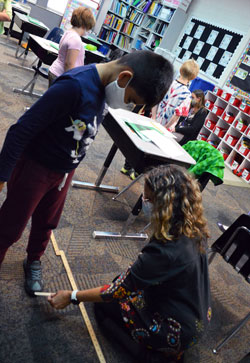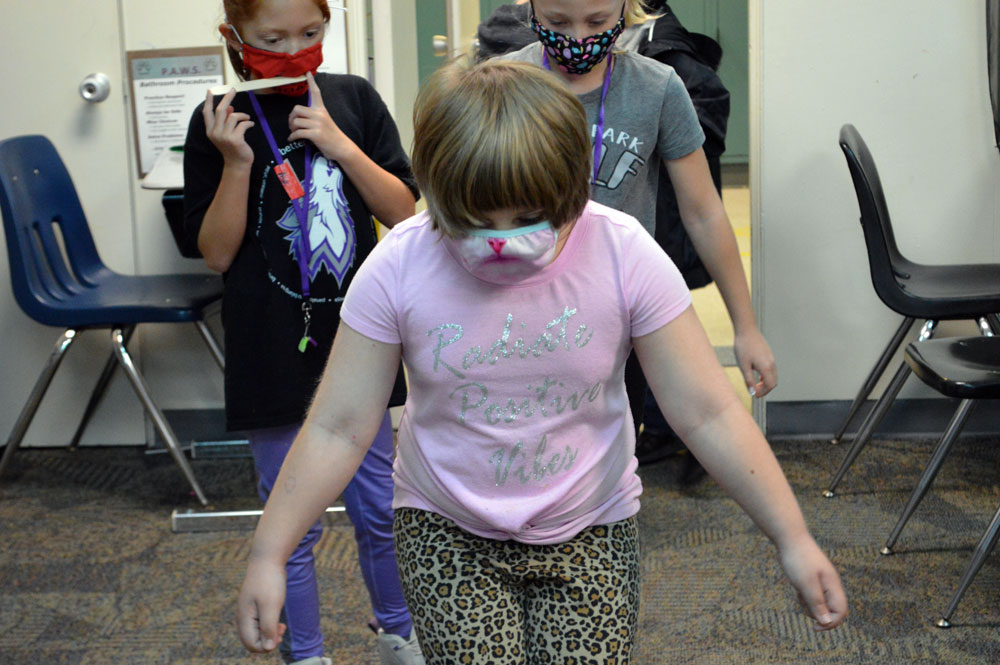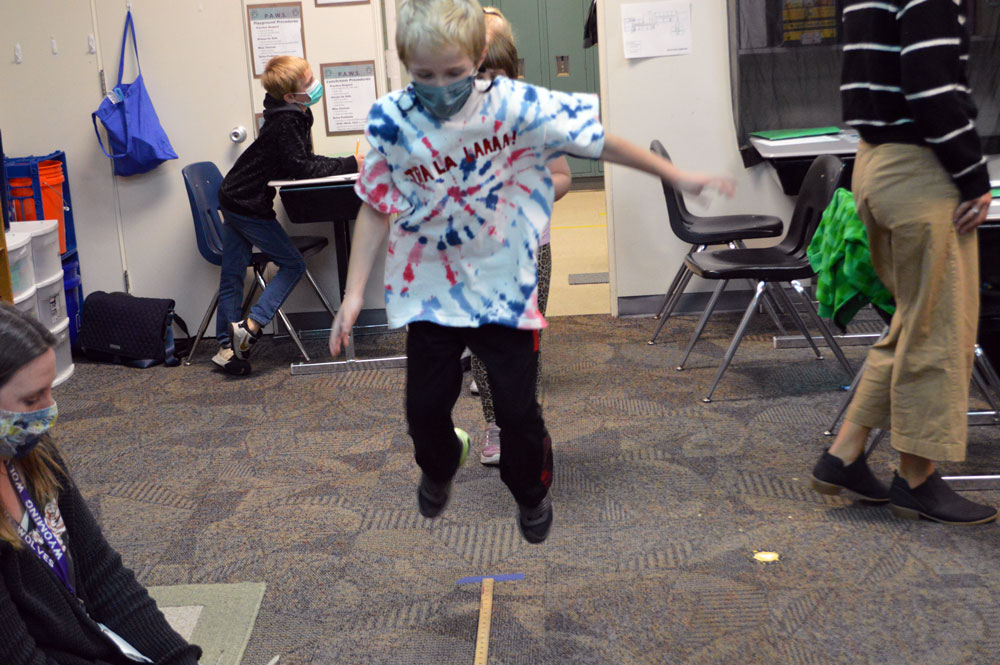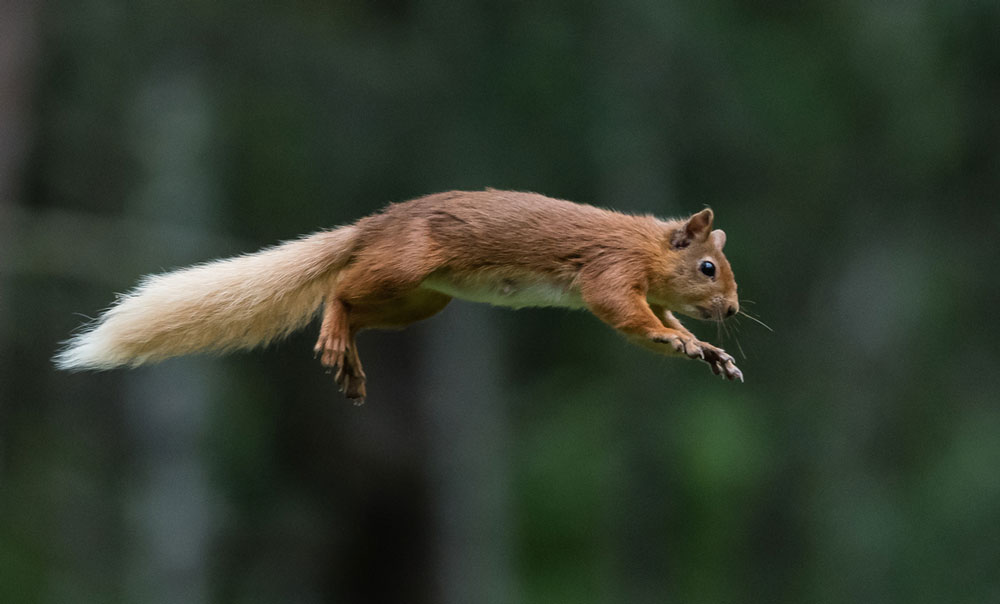Wyoming – Ashley DeMaagd bent her knees and sprung off the floor, jumping forward 63 inches, or 5-feet, 3 inches.
Nice jump for someone without a tail or claws.
“We can jump pretty far,” Ashley said of herself and her bouncy third-grade classmates at Oriole Park Elementary. “But squirrels, because of their body structure, can jump like 15 feet. Crazy.”
Ashley had just learned from teacher Sheri Adams that squirrels are so good at propelling themselves smoothly from tree to tree or between branches — bodies spread wide — due to several anatomical features. Turns out, a swish-swishing tail, strong back legs and sharp claws allow for some serious leaps.
Students compared their jumps — the best of three performed and measured on the classroom carpet — to that of the bushy tailed rodents. Adams recorded each student’s farthest jump on a line plot graph. How would their best jumpers compare to the average squirrel? Not even close. “No, that cannot be possible!” Ashley said when she learned a squirrel can jump 120 inches.

While the industrious outdoor creatures are spending their fall days collecting acorns and preparing for cooler days ahead, students are learning just how they go about what they do so well. The activity was part of a unit Adams is teaching on squirrels developed by Lucas Education Research, which offers project-based learning lessons aligned with Next Generation Science Standards and state standards in literacy and math.
The unit’s big question concerns the survival of animals and adaptations: “Why do I see so many squirrels but I can’t find any stegosauruses?”
Adams said students learn about small mammal adaptations present in squirrels that have helped them survive the millenia including diet, jumping and balancing ability, sharp teeth (better for opening acorns), and other anatomical features. They also learned fun facts like how tricky squirrels like to dig holes and leave them empty, misleading other squirrels about where they’ve stashed their acorns.
Said second-grader Hayleigh Duck: “We’ve learned that they have really good jumping and they can land and get a nut out of the ground.”













